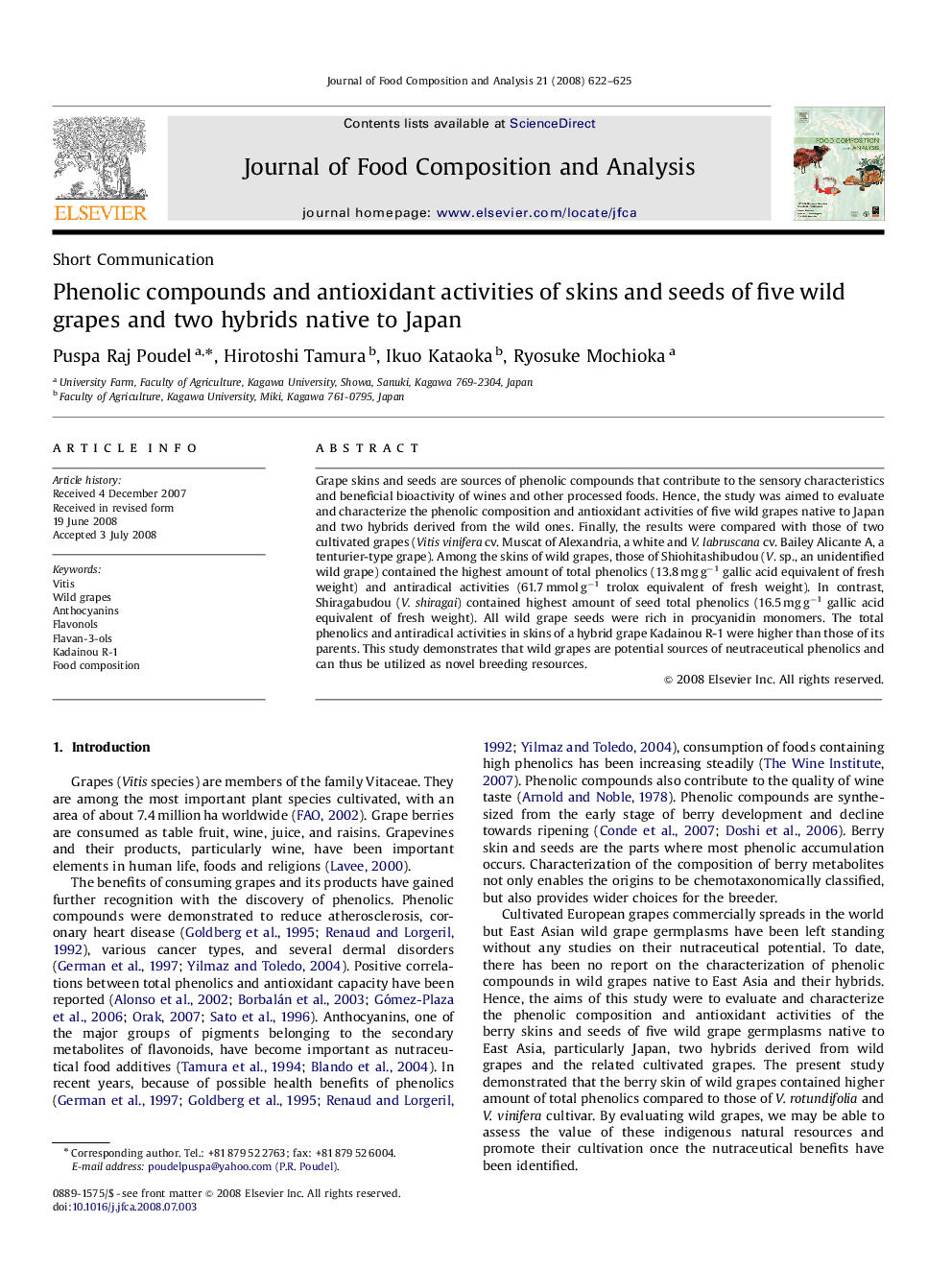| Article ID | Journal | Published Year | Pages | File Type |
|---|---|---|---|---|
| 1218731 | Journal of Food Composition and Analysis | 2008 | 4 Pages |
Grape skins and seeds are sources of phenolic compounds that contribute to the sensory characteristics and beneficial bioactivity of wines and other processed foods. Hence, the study was aimed to evaluate and characterize the phenolic composition and antioxidant activities of five wild grapes native to Japan and two hybrids derived from the wild ones. Finally, the results were compared with those of two cultivated grapes (Vitis vinifera cv. Muscat of Alexandria, a white and V. labruscana cv. Bailey Alicante A, a tenturier-type grape). Among the skins of wild grapes, those of Shiohitashibudou (V. sp., an unidentified wild grape) contained the highest amount of total phenolics (13.8 mg g−1 gallic acid equivalent of fresh weight) and antiradical activities (61.7 mmol g−1 trolox equivalent of fresh weight). In contrast, Shiragabudou (V. shiragai) contained highest amount of seed total phenolics (16.5 mg g−1 gallic acid equivalent of fresh weight). All wild grape seeds were rich in procyanidin monomers. The total phenolics and antiradical activities in skins of a hybrid grape Kadainou R-1 were higher than those of its parents. This study demonstrates that wild grapes are potential sources of neutraceutical phenolics and can thus be utilized as novel breeding resources.
